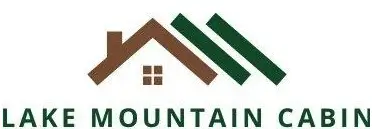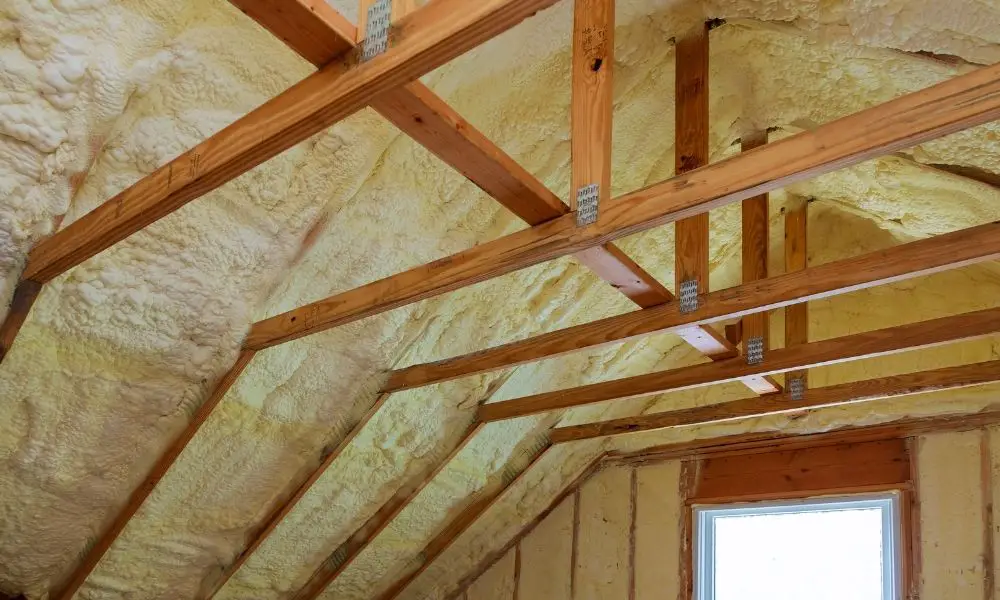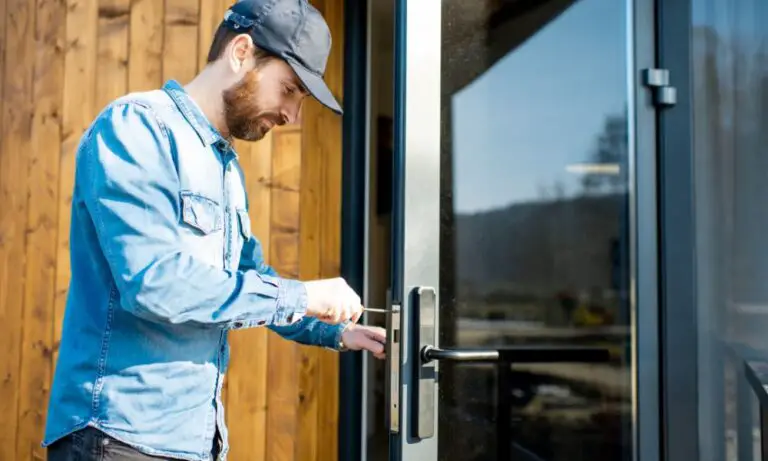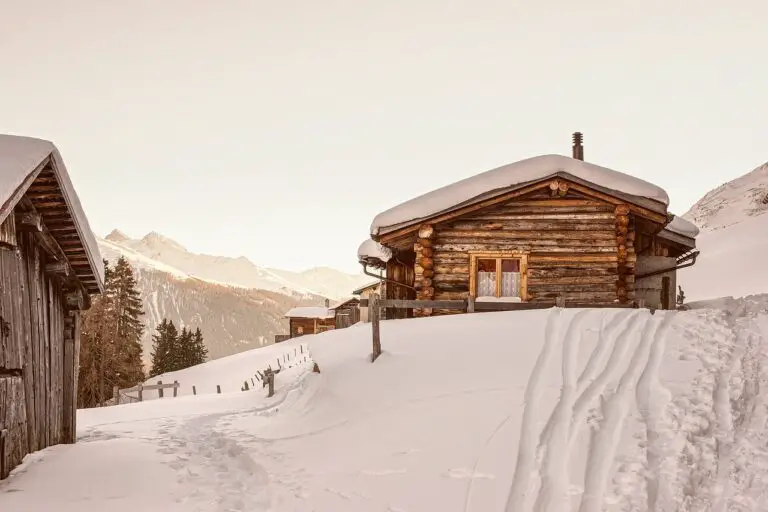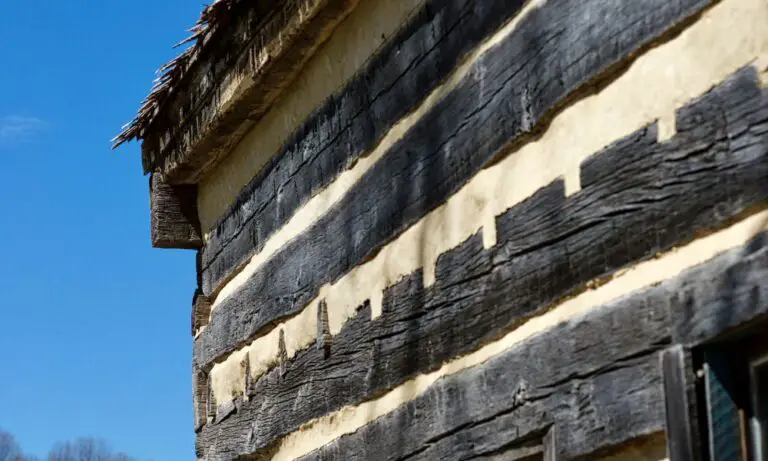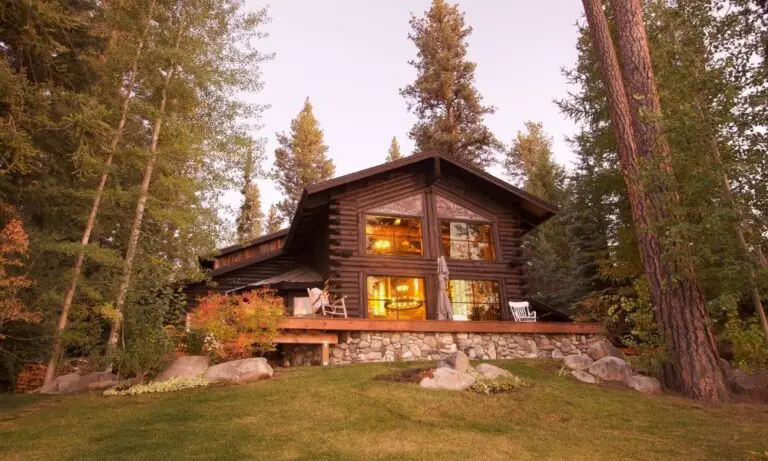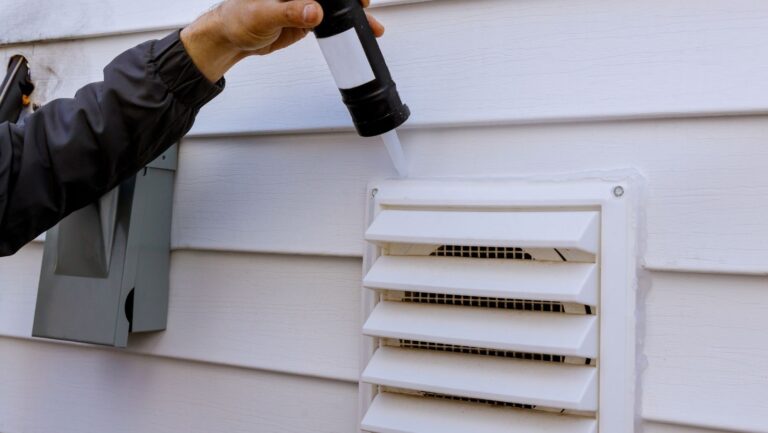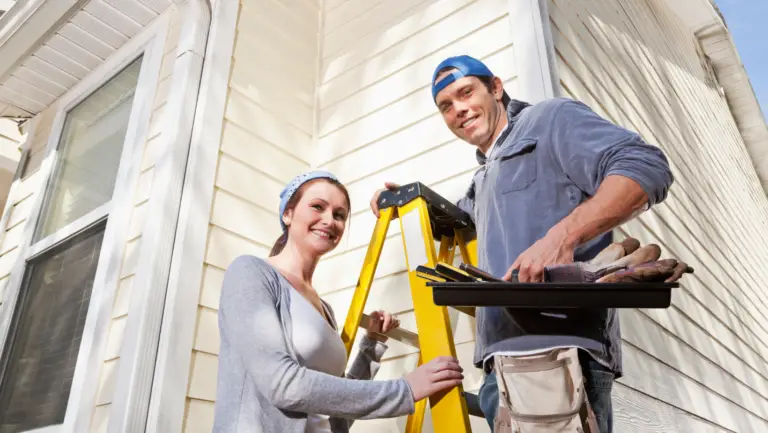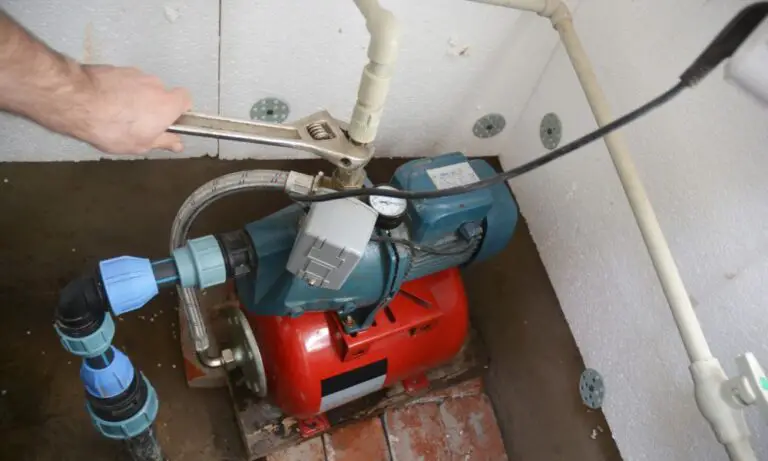If you’re a log cabin owner then you’ll need to know how to insulate a log cabin. Not only will it help to keep the temperature inside more stable, but it will also reduce the amount of energy you need to use (and therefore how much money you’ll spend) heating or cooling your log cabin.
So, how do you insulate a log cabin?
Well, there are a number of ways you can do it, but the most important thing is to make sure that you do it correctly. If you don’t insulate your log cabin properly then you could end up doing more harm than good.

Reasons To Insulate Your Log Cabin
Before we jump in and take a look at how to insulate your log cabin, let’s first take a moment to look at some of the reasons why you should be doing it in the first place.
New log cabin owners often overlook the importance of insulation and sealing. They assume that because the cabin is made of wood, it will be naturally insulated. However, this is not the case.
Log cabins are actually quite difficult to insulate correctly, which is why it’s important that you take the time to do it properly. Here are some of the main reasons why you should insulate your log cabin:
To Save Money On Energy Bills
One of the primary reasons for insulating your log cabin is to save money on your energy bills. If you don’t insulate your cabin then you’ll find that you’ll need to use more energy to heat or cool it, which will cost you more money.
If you’re living in a log cabin to live a more eco lifestyle then you’ll also want to make sure that you’re doing everything you can to reduce your energy consumption. By insulating your cabin, you can make a big difference.
To Improve The Comfort Of Your Cabin
Another reason to insulate your log cabin is for comfort. If your cabin is not properly insulated then you’ll find that it can be quite uncomfortable to live in, especially during extreme weather conditions.
In the summer, you’ll find it difficult to keep your cabin cool and in the winter, you’ll find it difficult to keep it warm. By insulating your cabin, you can make it much more comfortable to live in all year round.
To Prevent Damage
Damage caused by moisture and mould is very common with log cabin builds. If moisture gets into your cabin then it can cause the wood to rot and the structure of your cabin to weaken.
Mould is also a big problem and can cause serious health problems if it’s not dealt with quickly. If you’re worried about mould or moisture then you should definitely consider insulating your log cabin.
To Prevent Condensation
Another problem that can be caused by poor insulation is condensation. If there’s too much moisture in the air then it will condense on the coldest surfaces, which in a log cabin is often the windows.
This can cause serious problems as the water can damage the wood and encourage mould to grow. As we explored earlier mould can cause serious health problems, so it’s definitely something you want to avoid and a great reason to learn how to insulate a log cabin!
To Provide Some Soundproofing
Finally, insulation can also help to reduce noise. If you live in a log cabin in the middle of the woods then this probably isn’t something you’re too worried about. However, if you live in a cabin near a busy road or railway line then it can be a real problem.
If you want to reduce the amount of noise that comes into your cabin then you should definitely consider insulating it with specialist soundproofing material.
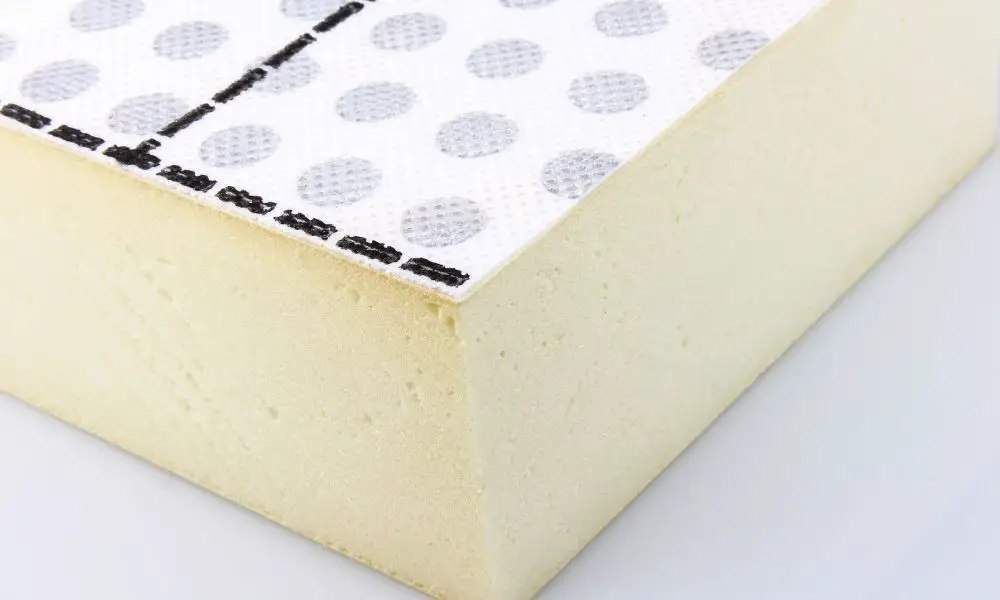
Types Of Insulation For Log Cabins
Now that we’ve taken a look at some of the reasons why you should be insulating your log cabin, let’s take a look at the different types of insulation that are available. There are a few different options to choose from and the one you choose will depend on a few different factors.
The most important factor to consider when thinking about how to insulate a log cabin is the climate. If you live in an area with extreme weather conditions then you’ll need to make sure that you choose an insulation that can cope with the conditions.
Here are some of the most common types of insulation for log cabins:
- Spray Foam Insulation
- Fiberglass Insulation
- Rigid Foam Board Insulation
- Sheepswool Insulation
Let’s take a look at each of these in more detail along with their pros and cons.
Spray Foam Insulation
Kicking off with spray foam insulation, this is one of the most popular types of insulation for log cabins. It’s made from a polymer that’s mixed with a foaming agent and then sprayed onto the surface that you want to insulate.
The big advantage of spray foam insulation is that it can be used on any surface, regardless of how irregular it is. This makes it ideal for log cabins as the logs are often not perfectly straight.
Another advantage of spray foam insulation is that it expands to fill any gaps. This means that you don’t have to worry about any cold air getting in through cracks and crevices.
The final advantage of spray foam insulation is that it’s very durable and long-lasting. Once it’s been applied, it will last for many years without needing to be replaced.
There are a few disadvantages of spray foam insulation that you should be aware of before you make a decision. The first is that it’s one of the more expensive types of insulation and so if you’re just learning how to insulate a log cabin it might not be the right choice.
It’s also quite difficult to apply and you’ll need to hire a professional if you want to do it yourself. If you’re not careful, it’s also possible to damage your property when applying spray foam insulation.
Fiberglass Insulation
Next up is fiberglass insulation, which is another popular type of insulation for log cabins. It’s made from glass fibers that are spun into a mat and then held together with a resin.
The big advantage of fiberglass insulation is that it’s very easy to install. You can either do it yourself or hire a professional, but it’s definitely a lot easier than spray foam insulation.
Another advantage of fiberglass insulation is that it’s very inexpensive. This makes it a great option if you want to know how to insulate a log cabin on a budget.
The final advantage of fiberglass insulation is that it’s very effective at reducing noise. If you want to know how to insulate a log cabin because it’s near a busy road then this can be a real godsend.
There are a few disadvantages of fiberglass insulation that you should be aware of before making your decision. The first is that it’s not as durable as some of the other types of insulation.
It’s also not as effective at sealing gaps and cracks, which means that cold air can still get in.
Rigid Foam Board Insulation
Rigid foam board insulation is another popular type of insulation for log cabins. It’s made from a variety of different materials, but the most common is polystyrene.
The big advantage of rigid foam board insulation is that it’s very easy to install. You can either do it yourself or hire a professional, but it won’t take nearly as long as spray foam insulation.
Another advantage of rigid foam board insulation is that it’s very effective at sealing gaps and cracks. This means that cold air is less likely to get into your log cabin.
The final advantage of rigid foam board insulation is that it’s very lightweight. This makes it much easier to handle and transport than some of the other types of insulation.
There are a few disadvantages of rigid foam board insulation that you should be aware of before making your decision. The first is that it’s not as durable as some of the other types of insulation.
It’s also not as effective at reducing noise.
Sheep Wool Insulation
Sheepswool insulation is another popular type of insulation for people that want to know how to insulate a log cabin with eco-materials. It’s made from, you guessed it, sheep’s wool.
The big advantage of sheep wool insulation is that it’s very eco-friendly. Sheep’s wool is a natural material that biodegrades very easily, so you can feel good about using it in your log cabin.
Another advantage of sheep wool insulation is that it’s very effective at sealing gaps and cracks. This means that cold air is less likely to get into your log cabin.
The final advantage of sheep wool insulation is that it’s very comfortable to use. It’s soft and fluffy, so it’s much more pleasant to work with than some of the other types of insulation.
There are a few disadvantages of sheep wool insulation that you should be aware of before making your decision. The first is that it’s not as durable as some of the other types of insulation.
It’s also not as effective at reducing noise.
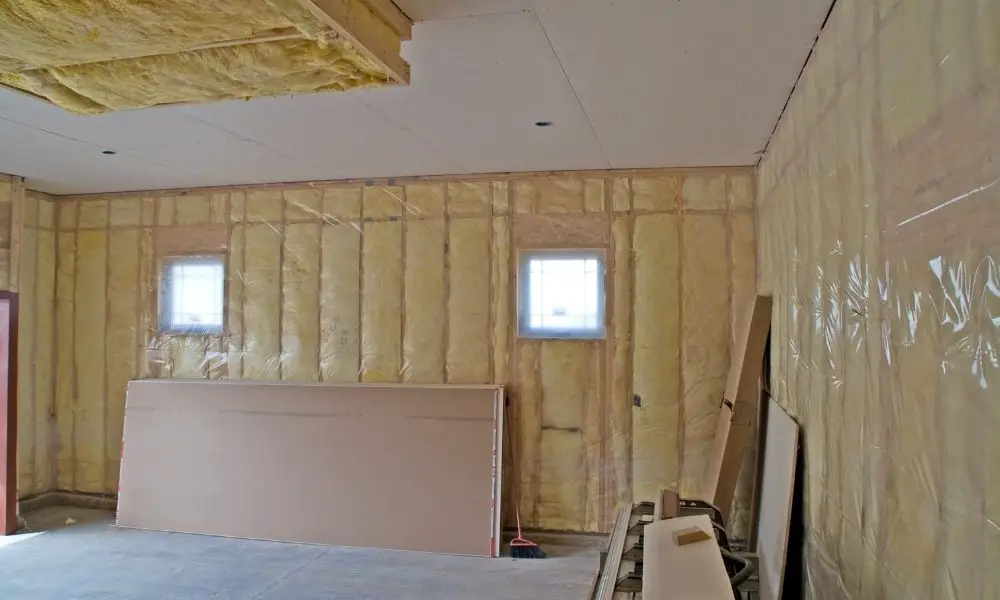
Parts Of A Log Cabin That Require Insulation
Of course, insulation is a broad term and the reality is that there are many different parts of a log cabin that require insulation. The most common are the walls, ceiling, floor and roof.
Insulating Log Cabin Walls
The walls of a log cabin are perhaps the most important part to insulate. This is because they’re the largest surface area and therefore the most likely to lose heat.
There are two main ways to insulate the walls of a log cabin. The first is to use spray foam insulation. This is a type of insulation that’s sprayed onto the walls and then left to harden.
The second is to use rigid foam board insulation. This is a type of insulation that comes in sheets and is then cut to size and glued or screwed into place.
Insulating Log Cabin Ceilings
The ceiling of a log cabin is another important part to insulate. This is because heat rises, so if your ceiling isn’t properly insulated then all the heat from your log cabin will escape through the ceiling.
Many people don’t think about this, but it’s actually very easy to insulate the ceiling of a log cabin. The most common way to do this is to use rigid foam board insulation.
Insulating Log Cabin Floors
A critical element that is often overlooked when insulating a log cabin is the floor. Insulating a log cabin floor is important because the floor is in contact with the ground, which is much colder than the air inside your cabin.
Underfloor heating is a fantastic way to heat a log cabin, but it’s important to make sure that the floor is properly insulated so that all the heat doesn’t escape.
Insulating a Log Cabin Roof
Log cabin roofing is another area where insulation is often overlooked. This is because most people assume that the roof doesn’t need to be insulated because it’s not in contact with the ground.
However, heat can escape through the roof just as easily as it can escape through the walls or ceiling. The best way to insulate a log cabin roof is to use spray foam insulation.
This is because it can be sprayed directly onto the roof and will then harden, creating a barrier that will prevent heat from escaping.
How Much Insulation Do I Need?
This is a difficult question to answer because it depends on a number of factors, such as the climate you live in and how well your log cabin is built.
However, as a general rule of thumb, you should aim for an insulation value of at least R-30 for the walls, R-40 for the ceiling and R-20 for the floor.
Of course, the best way to find out how much insulation you need is to talk to a professional. They’ll be able to assess your specific needs and recommend the best type and amount of insulation for your log cabin.

5 Tips On How To Insulate A Log Cabin
To finish this complete post on how to insulate a log cabin, we’ve put together 5 top tips to help you get the job done.
1. Choose The Right Insulation
The most important thing you can do when insulating your log cabin is to choose the right insulation. There are a variety of different types of insulation, so make sure you pick the one that’s best for your needs.
You might also have different types of insulation for different rooms and different insulation installations. For example, sealing a log cabin bathroom might require different insulation than what you would use for the cabin roof.
2. Install The Insulation Properly
Once you’ve chosen the right insulation, it’s important to install it properly. This means sealing any gaps and cracks that might let cold air in. You can easily test where the gaps are by holding a lit candle up to different parts of the cabin and seeing where the smoke goes.
Again, depending on the type of log cabin installation you’re installing, you might need to use different methods. For example, spray foam insulation is very effective at sealing gaps and cracks. Foam board is great for larger areas.
3. Don’t Forget The Windows
When you’re insulating your log cabin, don’t forget the windows! Log cabin windows and doors are one of the biggest sources of heat loss in a home, so it’s important to make sure they’re properly insulated. You can do this by installing storm windows or adding weatherstripping around the edges.
Wooden window frames will require more maintenance and draftproofing than UPVC windows. However, if the aesthetic of your log cabin is important to you, then it’s worth the extra effort.
4. Ventilate Properly
Another important thing to remember when you’re insulating your log cabin is to ventilate properly. This is especially true if you’re using spray foam insulation, which can trap moisture and cause mould growth if it’s not properly ventilated.
Examples of log cabin ventilation include installing a heat recovery ventilator (HRV) or an air-to-air exchanger. These devices help to circulate fresh air while still keeping the log cabin warm. Simple things like opening the windows and doors on a regular basis can also help with ventilation.
5. Use A Dehumidifier
If you’re worried about moisture and mould growth, another good tip is to use a dehumidifier. Dehumidifiers help to remove moisture from the air, which can prevent mould growth.
You can buy stand-alone dehumidifiers or ones that attach to your HVAC system. Either way, they’re a great way to keep the air in your log cabin dry and mould-free.
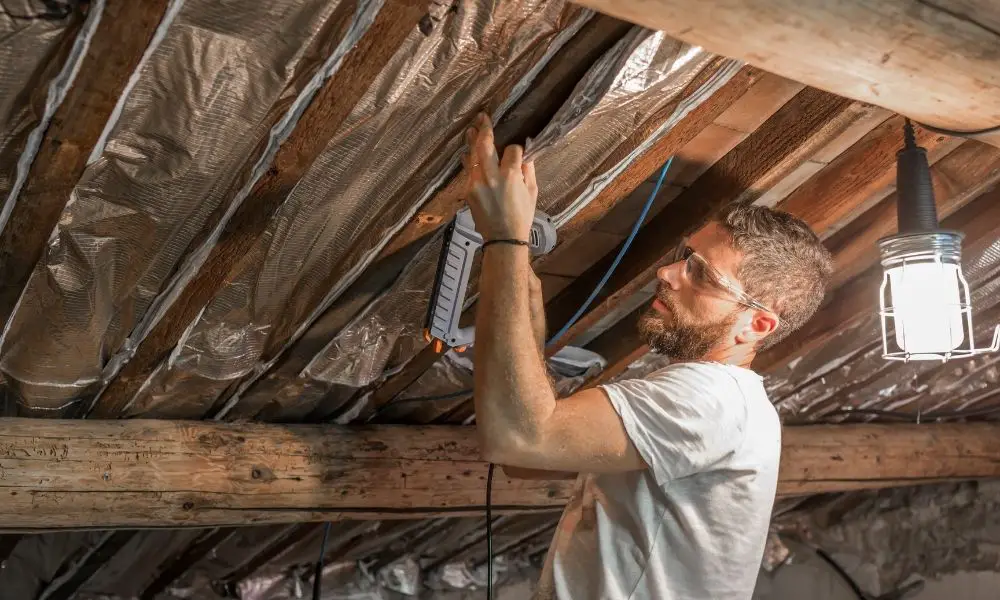
Log Cabin Insulation Maintenance
We recommend that you check your insulation every year to make sure it’s still effective. This includes checking for gaps and cracks and looking for signs of wear and tear and repairing them.
The reason for this is that, over time, insulation can settle and compress. This reduces its effectiveness and can allow cold air to seep in. By checking it regularly, you can make sure that your log cabin is always properly insulated.
3 checks your can do quickly and easily are:
- Check for any gaps or cracks in the insulation. These can be sealed with caulking or spray foam.
- Check for any signs of mould or mildew. If you see any, make sure to clean it up immediately and ventilate the area properly.
- Check the condition of the insulation itself. If it’s damaged, you might need to replace it.
If you’re not sure how to properly maintain your log cabin insulation or you want someone else to do it for you, we recommend hiring a professional. They’ll be able to check for any problems and make sure that your log cabin is properly insulated.
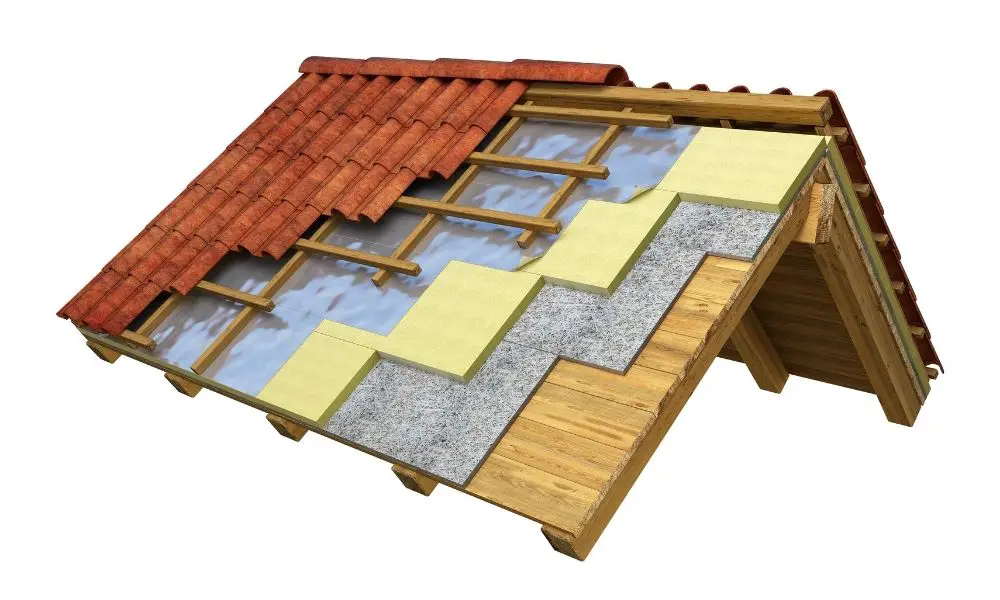
In Conclusion
If you follow these tips then you should have no problem insulating your log cabin properly. Just make sure you take your time and do a good job, and your cabin will be much more comfortable all year round and your energy bills will be lower!
Log Cabin Insulation FAQ
We’ve compiled a few frequently asked questions that people often think of when asking about how to insulate a log cabin. Hopefully, these will answer some of your queries too!
